“One alarming study found that the attention span of a human is now only eight seconds–which is said to be one second shorter than that of a goldfish.
How can organizations hope to engage individuals with these challenges? The answer is through visuals. The overall trend in social media today is to be as visual as possible. In fact, almost 66 percent of social media posts are visual.”
Inc. Magazine
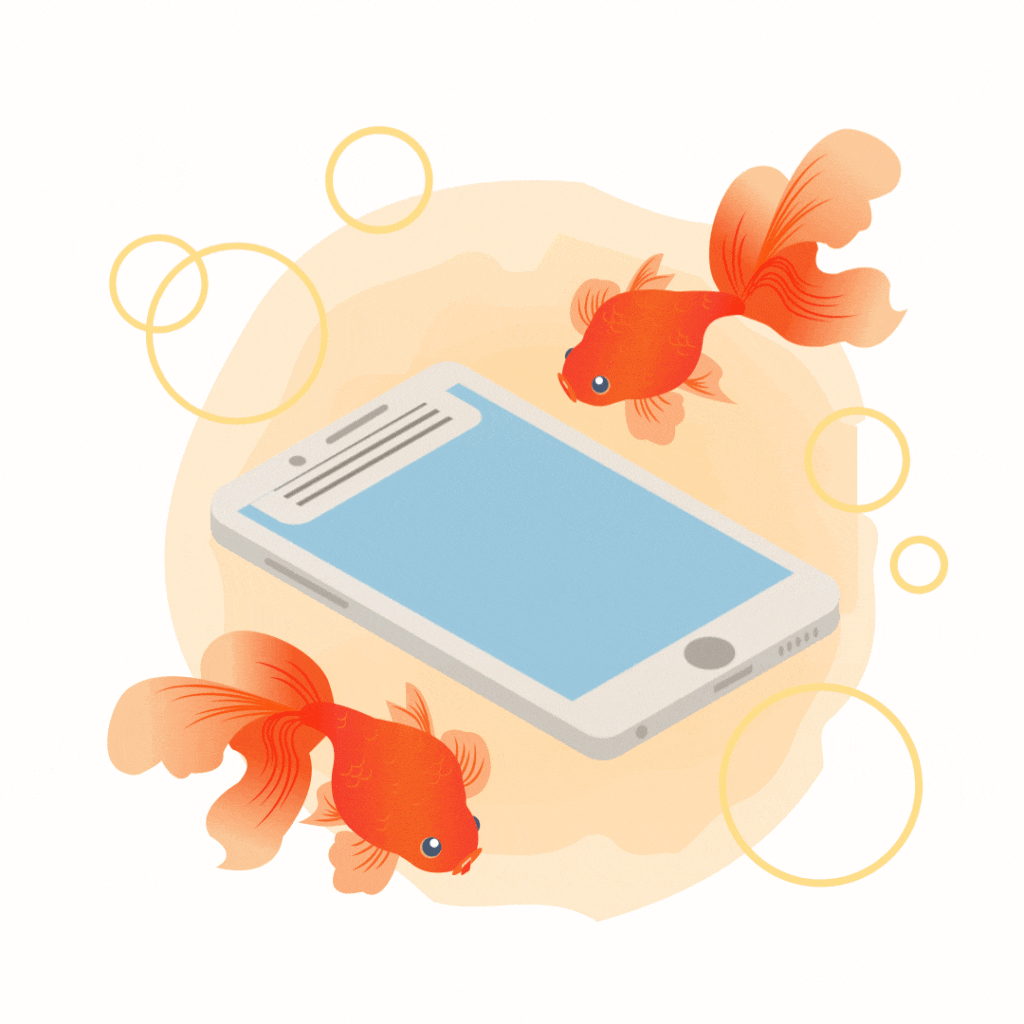
Visual Content
Using visuals in your social media content is the most important way to engage with your audience. Research indicates that posts containing images or video get far more views and engagement than those that are just text.
People are more likely to remember information when it is presented visually, and it’s easier to share visual content when they find something worth sharing.
You have only a few seconds to grab your audience’s attention. The most effective way is by using images or videos that clearly depict what you’re trying to communicate.
Image content includes photographs, illustrations, charts or other data, infographics, or screenshots. You can also take text and make visual content out of it, such as a meme or an inspirational quote graphic.
Video content can include pre-produced videos or live/streamed videos. GIFs (“graphics interchangeable format”) are also popular on social media and easily convey emotional responses, such as someone laughing, expressing surprise, or doing a “happy dance.” GIFs are eye-catching and easy to understand. You can use them as an interesting alternative to emojis. They are light and fun, and most social media platforms allow you to share them easily.
Where to Find Visuals
The good news is, it’s easy to find images online—and often in places where you can download them for free.
Need a photo of a margarita for your travel blog? A picture of a flexible man for your yoga website? We’ve got you covered, take a look at some of our favourite sites:
Unsplash is RubyMBA’s go-to site for visuals, with over 300,000 free-to-use images in their full collection, and hundreds of new releases weekly.
The Wikimedia Foundation With a library of over 42 million free-to-use media files, you should find a visual you can use.
New Old Stock If you are looking for something vintage, this site is full of archival photos.
Dreamstime is not free, but they are fairly inexpensive, With a library of over over 68 million images, you should find something suitable.
Shutterstock is not free, but if you’ve run out of options, you might find what you need in their library of over 171 million images.
You can also try one of these more niche websites:
Libreshot, Stocksnap.io, Pixabay, The Public Domain Archive, StockVault, Morguefile.
Some great sites to find animated GIFs are What Should We Call Me, Animal GIFs, PandaGIF, Reaction GIFs, and Giphy.
HelpScout has a great guide to making GIFs and a table (shown below) on deciding when to use an image, when to use a GIF, and when to use a video.
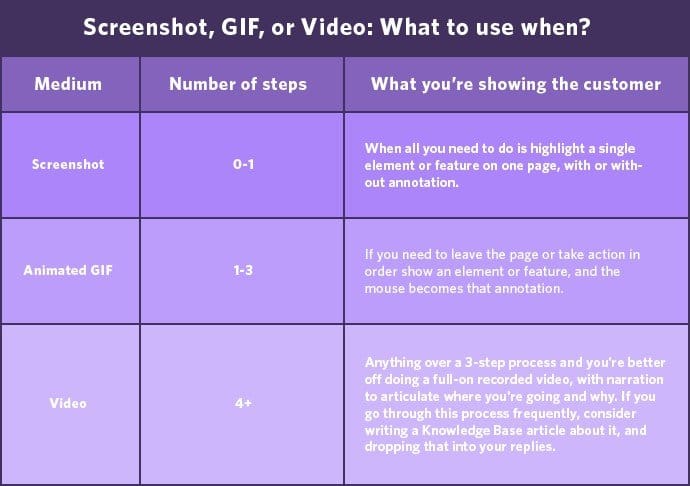
At RubyMBA, we LOVE Canva, which you can use to create images, GIFs, videos and SO MUCH MORE. One of these days we will be bringing you a Bootcamp on how to make the most of this remarkable tool.
A word of caution – optimize your images before uploading them to your website, blog or newsletter.
Even if you have the fastest internet, large images can still drain your data and slow your website down.
Don’t frustrate your customer with a slow-loading website, so they bounce away.
Use this week’s free Tech Tool, TinyPNG to dramatically reduce the size of your images with little-or-no effect on the image quality.

What to Consider when Choosing Visuals
There are a few things to consider when choosing your visuals for your social media page – remember, you want to catch a person’s eye as they quickly scroll through their feed. You also want to keep your
– Choose your colours carefully. Consider using your company’s brand colours, or colours that are likely to appeal to your ideal customer.
– Your visual should be aesthetically pleasing, and interesting.
– Graphics are key; they have the ability to create emotion, to inspire, amuse etc.
– Ensure that your visual relates to your sales pitch or presentation.
– Keep your visual simple, and easy to understand.
-Use the appropriate size for the data on your feed. Read about our Tech Tool here on how to optimise your images.
When you are reviewing a visual, ask yourself the following questions. Is it positive and encouraging? Does it give off a vibe that attracts your ideal customer? Would the people who like your visual, be your ideal customer? If the answer to any of these questions is yes, then you’ve got some good content to work with!
Remember to keep the overall visual element of your feed cohesive.
Keeping your Feed Fresh and Insteresting
To keep your feed fresh and interesting, you should mix up your social media content with a variety of different types of sources. This way, your audience will never get bored and you’ll always have something new to share! Broadly speaking, content can be divided into three categories:
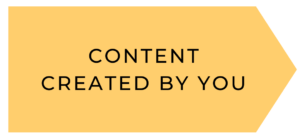
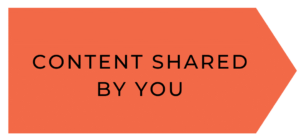
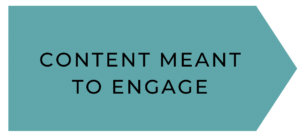
CONTENT CREATED BY YOU
Content that is created by you can come in many different forms, including:
- Links to other content you’ve created, like blog posts, articles, or videos
- Promotional offers
- Ideas or spur-of-the-moment thoughts that you have
- Image banners
- Posts that you’re re-posting from other social media sites (sharing your Tweets on Facebook, etc.)
Remember to provide a mix of content and not just post the same type.
The most engaging social media content is:
Short and Sweet. Keep your content on point. Your audience is scrolling through their news feed, quickly looking for something that catches their attention. They’re likely to ignore a long block of text or a video that’s too long. Keep your posts short and to the point.
Images and Videos. Posts with images or videos are much more likely to grab the attention of your audience.
Direct Links. Make sure that whenever you share a link, it is a direct link, and set to open in a new window when possible. For instance, when you post a link to Facebook, it will generate a clickable image preview of the website. You can then add your own headline or comments. Your audience can click the link and go directly to the site.
Variety of Formats. Again, variety is key. Share as much of a mix of content as possible. Create a schedule where you combine text, photos, links, and video to stimulate your audience.
CONTENT SHARED BY YOU
Share content that you think your audience would respond to. Content can be found through your own searches, as well as through automation.
Read the feeds of other users and thought leaders in your field to find content to share. Remember always to acknowledge your source.
The best way to find high quality content to share regularly is to sign up for news subscriptions. You can have top news stories and other content delivered directly to your email inbox, which takes some work out of the process for you.
CONTENT THAT IS MEANT TO ENGAGE
All content should be engaging, but this third type is more direct, for example, asking your audience for their opinion on an idea, or a “this or that” poll.
Direct content includes audience engagement through replies, likes, mentions, questions to your audience, surveys, and so on.
A good way to present a mix of these three types of content is to think in terms of three-way ratio, then adjust to your own preferences. For example, you might prefer to emphasize your own content and give it more than 33%. Alternatively, you may feel that engaging with a Q&A or poll from your audience is more important, and thus allocate more than 33% to that type of content.
Once you start sharing content, be sure to monitor and analyse results so you can see what your audience responds to most. Choose a content ratio accordingly, taking into account both your audience’s preferences and your own capabilities.
Next time, we will look at how to put it all together and create your own social media engagement plan.


